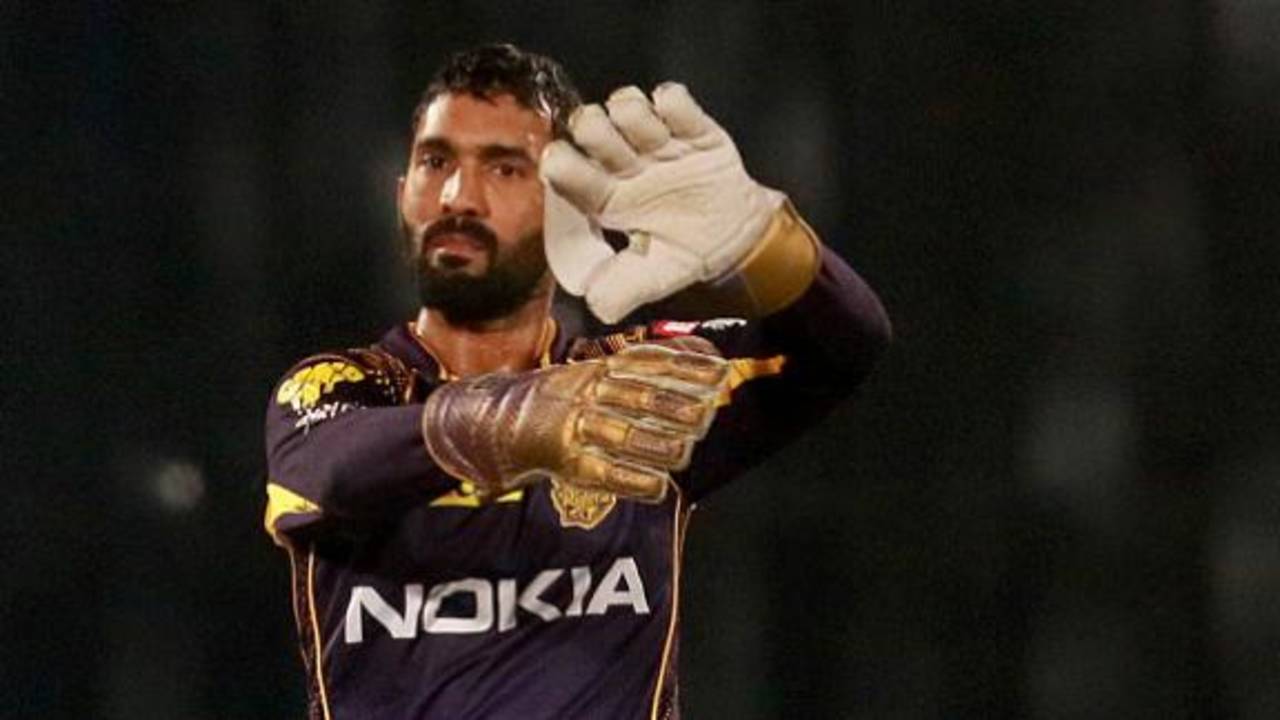Kolkata Knight Riders' Dinesh Karthik said after the game that he couldn't understand how an asking rate of eight an over before the rain break came down to a run a ball after the interruption. (Kings XI Punjab needed 96 from 11.4 overs, at a rate of 8.23, before the break, and 29 from 28 when they resumed.) How does Duckworth-Lewis-Stern (DLS) explain this? The DLS method only takes into account three factors when calculating a target:
- The number of overs lost
- The stage of the innings when those overs were lost
- The wickets in hand at the time of the interruption
The runs scored at the time of the break is immaterial. This is because it works on the basis of opportunity-cost of the overs lost to the batting team due to the interruption: the runs already scored do not come into the equation.
In this case, Kings XI Punjab lost seven overs with ten wickets in hand; they had the potential to score many more runs compared to a case where they would have lost seven overs with, say, only three wickets in hand. DLS recognises this and allocates a certain percentage of resources lost by the batting team due to this interruption. The target is then reduced by the same percentage.
How was the calculation performed in this case?
Given the stage at which Kings XI lost those seven overs, and the fact that they had all ten wickets in hand, DLS calculated that they lost about 35% of their run-scoring potential. Hence, the revised target was about 65% of their original target. The target of 125 would have remained the same even if they had been 50 without loss or 75 without loss. If they had been 75 for no wicket, they would have required 50 off the last 28 balls, which would have been a much tougher ask.
Thus Kings XI got the benefit of being way ahead of par score - which was 65 without loss - at the time of the break.
How would the target have been different if Kings XI had lost more wickets, or if the seven-over break would have happened at the different stage of their innings?
The difference would have been marginal if Kings XI had lost one or two wickets - 127 if they had been one down, and 129 if two - but had they been 96 for 4 at the time it rained, the revised target would have been 140, which would have meant 44 more runs in 28 balls. The fact that they racked up so many runs without losing any wickets helped them hugely.
If the seven-over interruption had happened just two overs into the innings, then Kings XI's target would have been 136 (with all wickets in hand). However, had it rained after 11 overs instead of 8.2, and the same number of overs had been lost, the revised target would have been 117 (with all wickets in hand). That's because, according to DLS calculations, the opportunity-cost of a break early in the innings is lesser than one that happens during the later stages of an innings.
Karthik also mentioned that the VJD method - an alternative rain-rule system devised by V Jayadevan, which is used in Indian domestic cricket - should be used in the IPL. Would there have been a different target had VJD been used here?
No, the VJD target in this case would also have been exactly the same - 125. The 8.2 over par score according to that method, though, was 71; DLS calculated it as 65. Incidentally, the VJD method also doesn't look at the runs scored at the time of the interruption, so the situation for Karthik and for KKR would have been exactly the same regardless of which system was in use.
S Rajesh is stats editor of ESPNcricinfo. @rajeshstats
